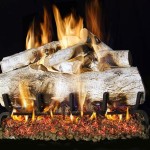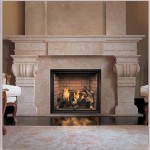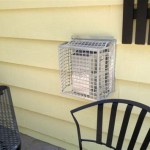Gas Fireplace Insert Direct Vent: A Comprehensive Guide
Gas fireplace inserts offer an efficient and aesthetically pleasing alternative to traditional wood-burning fireplaces. Direct vent models, in particular, have gained significant popularity due to their enhanced safety features, improved heating capabilities, and simplified installation process. This article delves into the intricacies of gas fireplace insert direct vent systems, exploring their operation, benefits, installation considerations, and maintenance requirements.
A gas fireplace insert is a self-contained unit designed to fit inside an existing fireplace opening. It is fueled by natural gas or propane and provides supplemental heat to the home. The "direct vent" designation refers to the venting system employed. Direct vent systems draw combustion air from outside the home and exhaust combustion byproducts directly to the exterior through a sealed, coaxial or concentric vent pipe. This sealed system eliminates the need for a traditional chimney flue, making installation more flexible and improving overall safety.
Unlike traditional wood-burning fireplaces which often lose a significant portion of heat up the chimney, gas fireplace inserts are designed for efficiency. They typically achieve higher heating efficiency ratings, converting a greater percentage of the fuel's energy into usable heat for the home. This translates to lower energy bills and a more comfortable living environment.
Understanding the Direct Vent System
The direct vent system is a critical component of a gas fireplace insert. It differentiates these inserts from vent-free or B-vent models. A direct vent system operates as a closed loop, separating the combustion process entirely from the interior air of the home. This separation is achieved through the use of a dual-walled vent pipe.
The outer pipe draws fresh air from outside the home to support combustion within the fireplace insert. Simultaneously, the inner pipe vents the exhaust gases, including carbon monoxide and other byproducts, directly to the outside. This coaxial or concentric design ensures that no combustion byproducts enter the living space, significantly reducing the risk of carbon monoxide poisoning and improving indoor air quality.
The vent pipes themselves are typically made of aluminum or stainless steel and are designed to withstand the high temperatures and corrosive nature of the exhaust gases. They are also engineered to maintain a specific distance from combustible materials, further enhancing safety. The vent system's design must adhere to strict safety standards and local building codes to ensure proper and safe operation.
The sealed combustion chamber inherent in a direct vent system also contributes to improved efficiency. By drawing air from outside, the fireplace does not consume heated air from within the home, reducing drafts and preventing the furnace or other heating systems from working harder to compensate for the lost heat.
Advantages of Gas Fireplace Insert Direct Vent Systems
Gas fireplace inserts with direct vent systems offer several compelling advantages over traditional fireplaces and other types of gas fireplace units. These benefits extend to safety, efficiency, aesthetics, and convenience.
Safety: The sealed combustion system of a direct vent insert is the most significant safety advantage. By drawing air from outside and exhausting combustion products directly to the exterior, the risk of carbon monoxide poisoning is minimized. The sealed system also prevents backdrafting, which can occur in traditional chimneys if the flue is blocked or improperly sized. This makes direct vent inserts a safer option for homes with airtight construction or those located in areas with frequent high winds.
Efficiency: Direct vent gas fireplace inserts are significantly more efficient than traditional wood-burning fireplaces. They typically boast efficiency ratings of 70% to 85% or higher, meaning that a greater percentage of the fuel's energy is converted into usable heat for the home. This improved efficiency translates to lower energy bills and reduced reliance on the home's primary heating system. The sealed combustion chamber also prevents the loss of heated air from the home, further enhancing efficiency.
Aesthetics: Gas fireplace inserts are available in a wide range of styles, finishes, and sizes to complement any home décor. From traditional log sets to modern glass media, there are options to suit every taste. The realistic flame patterns and glowing embers create a cozy and inviting atmosphere, replicating the ambiance of a traditional wood-burning fireplace without the hassle and mess. Many models also offer features such as adjustable flame height and remote control operation.
Convenience: Gas fireplace inserts offer unparalleled convenience compared to wood-burning fireplaces. There is no need to chop, stack, and carry wood, eliminating the physical labor and storage requirements associated with wood-burning. Starting a gas fireplace is as simple as flipping a switch or pressing a button on a remote control. The flame is instant, consistent, and controllable. There is also no ash to clean up, further simplifying maintenance.
Installation Flexibility: While requiring professional installation, direct vent systems offer more flexibility in terms of placement within the home compared to traditional fireplaces requiring a large chimney. The venting system can be installed horizontally through an exterior wall or vertically through the roof, allowing for greater freedom in design and placement. This can be particularly advantageous in homes where a traditional chimney is not feasible or desired.
Installation and Maintenance Considerations
The installation of a gas fireplace insert with a direct vent system is a complex process that should always be performed by a qualified and licensed professional. Proper installation is crucial for ensuring safe and efficient operation of the unit. It is imperative to adhere to all manufacturer's instructions, local building codes, and safety regulations.
Pre-Installation Inspection: Before installation begins, a thorough inspection of the existing fireplace and chimney should be conducted. This inspection will assess the condition of the chimney, verify the size and compatibility of the fireplace opening, and identify any potential issues that need to be addressed. If the existing chimney is damaged or unsuitable for use, it may need to be repaired or relined.
Venting System Installation: The installation of the direct vent system is a critical step. The vent pipes must be properly sized, sealed, and positioned to ensure proper ventilation and prevent leaks. The vent system must also maintain adequate clearances from combustible materials to prevent fire hazards. The professional installer will carefully follow the manufacturer's instructions and local building codes to ensure a safe and code-compliant installation.
Gas Line Connection: Connecting the gas line to the fireplace insert is another crucial step. The gas line must be properly sized and installed in accordance with local codes and regulations. A qualified gas fitter will ensure that the gas line is leak-free and that the gas pressure is within the acceptable range for the fireplace insert. A shut-off valve should also be installed near the fireplace for safety and maintenance purposes.
Testing and Inspection: Once the installation is complete, the fireplace insert and venting system should be thoroughly tested to ensure proper operation. This includes checking for gas leaks, verifying the flame pattern, and confirming that the venting system is functioning correctly. A local building inspector may also need to inspect the installation to ensure that it meets all applicable codes and regulations.
Regular Maintenance: Regular maintenance is essential for keeping a gas fireplace insert operating safely and efficiently. This includes cleaning the glass panel, inspecting the burner and pilot light, and checking the venting system for obstructions. The frequency of maintenance will depend on the usage of the fireplace and the manufacturer's recommendations. It is generally recommended to have the fireplace professionally inspected and serviced annually.
Cleaning the Glass: The glass panel on a gas fireplace insert can become dirty over time due to soot and other residues. Cleaning the glass regularly will maintain a clear view of the flames. Use a commercially available fireplace glass cleaner or a mixture of vinegar and water. Avoid using abrasive cleaners, which can scratch the glass.
Inspecting the Burner and Pilot Light: Periodically inspect the burner and pilot light for any signs of damage or debris. Clean the burner ports with a soft brush or vacuum cleaner to remove any obstructions. If the pilot light is not burning properly, consult the manufacturer's instructions or contact a qualified technician for assistance.
Checking the Venting System: Inspect the venting system for any signs of damage, such as cracks, leaks, or corrosion. Ensure that the vent termination is free of obstructions, such as snow, ice, or leaves. If you suspect any problems with the venting system, contact a qualified technician for inspection and repair.
Professional Inspection: It is recommended to have a gas fireplace insert professionally inspected and serviced annually. A qualified technician can perform a thorough inspection of the entire system, including the burner, pilot light, venting system, and gas line. This will help ensure that the fireplace is operating safely and efficiently.
By understanding the operation, benefits, installation considerations, and maintenance requirements of gas fireplace insert direct vent systems, homeowners can make informed decisions about heating their homes and enjoy the comfort and ambiance of a fireplace with enhanced safety and efficiency.

Kingsman Idv 26 Direct Vent Gas Insert Idv26 North Country Fire

Fireplaceinsert Com Kingsman Fireplace Insert Idv36

Majestic Ruby 35 Direct Vent Gas Insert Ruby35 North Country Fire

Oakville Gdix4 Direct Vent Gas Fireplace Inset By Napoleon

Direct Vent Gas Fireplace Insert With Intellifire Touch Ignition Syste Wood Majestic

Monessen Direct Vent Gas Fireplace Insert Reveal

Napoleon Ascent Dx42 Direct Vent Gas Burning Fireplace

White Mountain Hearth By Empire Comfort Systems Direct Vent Gas Fireplace Insert Loft

30 Ruby Contemporary Intellifire Touch Direct Vent Fireplace Insert Blower And Remote Electronic Ignition Majestic

Superior Dri2027 27 Inch Electronic Ignition Direct Vent Gas Fireplace Insert With Aged Oak Logs
Related Posts








